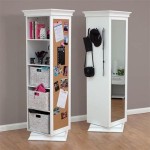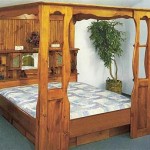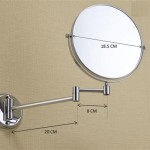How To Hang a Mainstays Mirror
Mainstays mirrors are a popular and affordable option for adding functionality and style to various spaces within a home. Their availability at major retailers like Walmart makes them accessible to a wide range of consumers. However, proper installation is crucial to ensure the mirror is securely mounted and aesthetically pleasing. This article provides detailed instructions and considerations for hanging a Mainstays mirror safely and effectively.
Prior to commencing the installation process, it is essential to gather the necessary tools and materials. A standard toolkit should include a measuring tape, a level (preferably a spirit level), a pencil, a drill with appropriate drill bits, wall anchors (if required based on the wall type and mirror weight), a screwdriver suitable for the chosen wall anchors, and safety glasses. A stud finder is also highly recommended to locate wall studs whenever possible, which offer the strongest support for heavier mirrors.
The selection of hanging hardware is paramount for a secure installation. Most Mainstays mirrors do not include mounting hardware, requiring the consumer to purchase it separately. The type of hardware needed will depend on the weight of the mirror and the type of wall to which it will be affixed. Options include picture hooks (suitable for lighter mirrors on drywall), D-rings with picture wire (allowing for adjustable positioning), and heavy-duty wall anchors with screws (necessary for heavier mirrors or installations on plaster or drywall without stud support). Always consult the mirror's packaging or product specifications for the manufacturer's recommended weight capacity and mounting guidelines.
Determining the Optimal Mirror Placement
Strategic placement is vital for both aesthetic appeal and functional utility. Consider the purpose of the mirror. Is it intended for grooming in a bathroom, adding light and spaciousness to a hallway, or serving as a decorative element in a living room? The intended function will significantly influence the ideal height and location.
For bathroom mirrors above a vanity, the bottom edge of the mirror should typically be positioned approximately 5 to 10 inches above the backsplash. This placement allows for comfortable viewing without interfering with the faucet or other vanity fixtures. The width of the mirror should ideally be slightly narrower or equal to the width of the vanity to maintain visual balance.
In hallways or living rooms, the placement is more flexible but should still adhere to general design principles. A common guideline is to hang the mirror so that its center is at approximately eye level, typically around 60 to 65 inches from the floor. However, this can be adjusted based on the average height of the occupants of the home and the overall scale of the room. The mirror should also be positioned to reflect a pleasant view or enhance the natural light in the space.
Before making any permanent markings, use a measuring tape and level to experiment with different positions. Have someone hold the mirror in place while stepping back to assess the look from different vantage points. This step allows for adjustments and ensures that the final placement is visually appealing and serves the intended purpose.
Preparing the Wall for Installation
Once the optimal location has been determined, the next step involves preparing the wall for the installation of the hanging hardware. This process varies depending on the type of wall (drywall, plaster, concrete, or wood) and the presence of wall studs.
If a stud finder indicates the presence of a stud at the desired location, this offers the strongest and most secure mounting option. Mark the center of the stud with a pencil. Pre-drilling a pilot hole slightly smaller than the diameter of the screw being used is recommended. This prevents the wood from splitting and makes it easier to drive the screw straight.
If a stud is not available, wall anchors are necessary to provide adequate support. The type of wall anchor required depends on the weight of the mirror. For lighter mirrors (less than 10 pounds), self-drilling drywall anchors may suffice. These anchors are relatively easy to install, simply screwing directly into the drywall. For heavier mirrors, more robust anchors such as toggle bolts or molly bolts are recommended. These anchors provide a much stronger hold by expanding behind the drywall, distributing the weight over a larger area.
To install wall anchors, first mark the location where the anchor will be placed. Use a drill to create a hole of the appropriate size, as specified by the anchor manufacturer. Insert the anchor into the hole and follow the manufacturer's instructions to secure it. This may involve tightening a screw or pulling on a strap to expand the anchor behind the wall.
For plaster walls, it is particularly important to use anchors designed for this material, as plaster is more brittle than drywall and prone to cracking. Avoid hammering directly into plaster, as this can cause it to crumble. Instead, pre-drill a pilot hole and use anchors that are designed to grip the plaster securely.
Hanging the Mainstays Mirror Securely
With the wall prepared and the mounting hardware installed, the final step is to hang the Mainstays mirror securely. The specific method will depend on the type of hanging hardware chosen.
For mirrors with D-rings and picture wire, attach the D-rings to the back of the mirror frame, ensuring they are positioned symmetrically. Thread the picture wire through the D-rings and twist the ends securely together, creating a taut wire that is long enough to reach the mounting hook on the wall.
Carefully lift the mirror and position it so that the picture wire rests on the hook or screw on the wall. Ensure that the mirror is centered and level. Use a level to make any necessary adjustments. Once the mirror is stable and level, double-check that the wire is securely fastened to the hook and that the mirror is not wobbling or at risk of falling.
For mirrors with pre-installed mounting brackets, align the brackets with the screws or hooks on the wall. Gently lower the mirror onto the mounting hardware, ensuring that the brackets engage properly. Make sure the mirror is securely attached and level before releasing it.
After hanging the mirror, it is crucial to test its stability. Gently nudge the mirror to ensure that it is firmly attached to the wall and does not wobble or shift. If any movement is detected, re-evaluate the mounting hardware and consider using stronger anchors or repositioning the mirror closer to a wall stud. Regular inspection of the mounting hardware is advisable to ensure long-term stability and prevent accidental falls.
Safety is paramount throughout the entire installation process. Always wear safety glasses to protect the eyes from flying debris during drilling. When working with power tools, ensure they are properly grounded and in good working condition. If handling heavy mirrors, enlist the assistance of another person to prevent injury. Adhering to these safety precautions will minimize the risk of accidents and ensure a successful and secure mirror installation.
The placement of the mirror in relation to light sources can dramatically impact its aesthetic effect. Positioning the mirror to reflect natural light can brighten a room and create a sense of spaciousness. Conversely, placing a mirror directly opposite a bright light source can cause glare and discomfort. Experiment with different angles to find the optimal balance between light reflection and visual comfort.
The style of the Mainstays mirror should complement the overall décor of the room. Consider the shape, size, and frame design of the mirror. A sleek, minimalist mirror may be ideal for a modern space, while a more ornate mirror may be better suited for a traditional setting. Pay attention to the color and finish of the frame, ensuring it harmonizes with other elements in the room.
The size of the mirror should be proportionate to the size of the wall and the surrounding furniture. A large mirror can overwhelm a small space, while a small mirror may get lost on a large wall. As a general rule, the mirror should occupy approximately two-thirds of the wall space to create a balanced and visually appealing composition. Consider creating a gallery wall arrangement with multiple smaller mirrors to add visual interest and personalize the space. Proper planning and execution are essential for a successful Mainstays mirror installation, ensuring both safety and aesthetic satisfaction.

Easy Way To Hang S Est Full Length Mirror Under 7

Mainstays Mirror Hardware

Mainstays Over The Door Mirror With Hardware 14 25in X 50 Rustic Grey Com

Use 3m Command Strips To Hang Mainstays 13 Inch X 49 Rectangle Mirror

Mainstays Over The Door Mirror With Hardware 14 25in X 50 Black

Hang A Full Length Door Mirror In Girls Room From Target Tj Maxx Ross Etc

Mainstays Over The Door Mirror With Hardware 14 25in X 50 White Com

Diy Wall Mirror Using Mirrors

Mainstays Full Length Mirror Under 5

Door Mirror With Baby Boy Creative Ideas Handyman Help Tiktok








